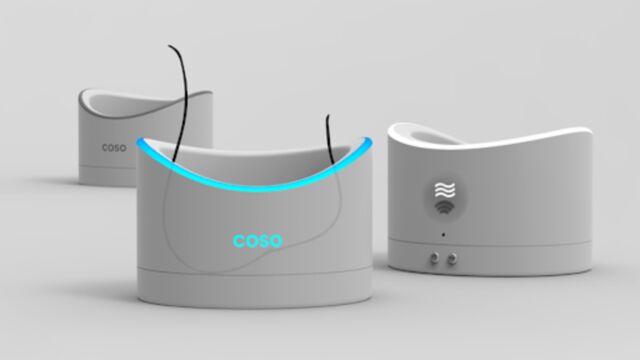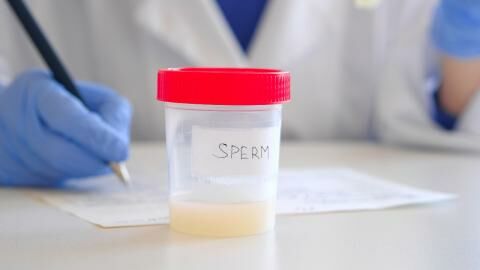Years of research into contraceptive methods for men have so far been fruitless, and despite a male birth controlpill being in the works for over 50 years, condoms and vasectomies are still the only options.
Discover our latest podcast
However, men can once again hold out hope for the perfect birth control, as a new device known as the Coso has recently won a James Dyson award, an international award celebrating design and engineering.
How does the Coso work?
Invented by German design grad Rebecca Weiss, the Coso works by using ultrasound to reduce the creation and development of sperm cells.
While this may sound scary, the Coso is actually a reversible and hormone-free method of male contraception that can be used at home after being configured by a doctor. Plus, it has the added bonus of acting like a spa for your testicles.
To use the small but funky device, the user can fill it with water, and according to the James Dyson Award website, when ‘the water is heated up to operating temperature. COSO is ready for ultrasound treatment.'
The user spreads his legs and sits down to place the testicles in the device. The ultrasound process continues for a few minutes. The remaining time can be monitored in real-time via the COSO app.
Then, after the job is done, the Coso turns itself off automatically.
According to the Coso website, the devices' contraceptive effects would come into play about two weeks after the first use, with an additional dip being needed every two months. Then, if the user no longer wanted to use the device, the effects would be reversed after six months.
Ultrasound contraceptives aren't a new concept
Although it may sound like an experimental idea, ultrasound technology for male contraception isn’t new and dates back to 1977. One study previously showed that ‘in all treated animals as well as in human patients the results indicate that ultrasound significantly suppresses spermatogenesis according to the dosage and frequency of treatment, without any effect on Leydig cells or blood testosterone levels.’
Weiss’ now has her sights set on developing both a functional prototype and a ‘high-fidelity full-scale prototype’. However, the product needs financial support to make the gadgets and clinical trials possible, and to answer questions of feasibility.
What was the inspiration behind Coso?
Weiss spoke about the inspiration behind the design, explaining that ‘about a year ago I was diagnosed with cancer precursor cervix due to contraception with the pill.’
After that, hormonal contraception was no longer an option. When my partner and I were looking for an alternative method, we became aware of the lack of male contraceptives.
She continued: ‘The problem is not unique to me personally. It affects many others as well. This is also evident in the current growing public discussion about the lack of contraceptive alternatives.’
So I decided to deal with the development of a new contraceptive approach for men in my master thesis in Industrial Design at the Technical University in Munich.
After winning the James Dyson Award, Weiss will now face off against winners from other countries, including clothing that generates power and a drawing tool for people with disabilities.















